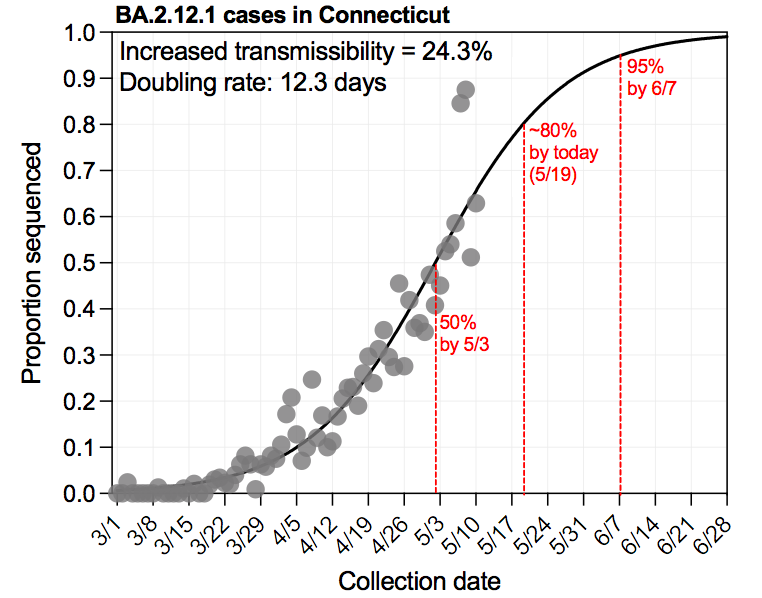🧬5/6 Connecticut #SARSCoV2 variant surveillance
@CovidCT | @jacksonlab | @CTDPH | @YaleSPH | @YaleWestCampus | @YNHH
- 1st detection of B.1.617.2 (reported in India) in CT
- P.1 📈 in frequency, following US trends
short 🧵 | Report 👇
covidtrackerct.com/variant-survei…
@CovidCT | @jacksonlab | @CTDPH | @YaleSPH | @YaleWestCampus | @YNHH
- 1st detection of B.1.617.2 (reported in India) in CT
- P.1 📈 in frequency, following US trends
short 🧵 | Report 👇
covidtrackerct.com/variant-survei…
2/7 B.1.617 first reported in India comes in 4 different flavors primarily defined by their spike gene mutations. While the CDC currently recognizes all 4 as VOIs, the B.1.617.2 lineage that we detected importantly does not have the E484Q mutation.
👇from outbreak.info
👇from outbreak.info

3/7 The B.1.617.2 case was not associated with travel, suggesting that there is some level of local transmission. Though the presence of other highly transmissible variants in CT - like B.1.1.7 - may limit its ability to become established.
nextstrain.org/community/grub…
nextstrain.org/community/grub…

4/7 P.1 (first detected in Brazil) is one of the fastest growing variants in the *United State* - it now represents ~10% of the sequenced cases.
👇from outbreak.info
👇from outbreak.info

5/7 We are starting to see similar trends of P.1 📈 in *Connecticut*, and it's now up to about ~6% of the sequenced cases.
From our very preliminary data, P.1 doesn't seem to be driving a large proportion of vaccine breakthrough cases, but its obviously something to watch.
From our very preliminary data, P.1 doesn't seem to be driving a large proportion of vaccine breakthrough cases, but its obviously something to watch.

6/7 Will end with some 👍 news - both B.1.1.7 and non-B.1.1.7 cases continue to drop to the lowest point in 2021 🥳🎉🙌
Continued vaccinations 💉 will ensure that this 📉 trend continues.
Continued vaccinations 💉 will ensure that this 📉 trend continues.

7/7 This week I'd like to highlight the work of @jessroth95 - our awesome statistician and spatial modeler. She is leading our analysis of variant introductions using travel data and helps with just about every project. Oh, and she also does all of our GISAID submissions 🍻 

• • •
Missing some Tweet in this thread? You can try to
force a refresh















